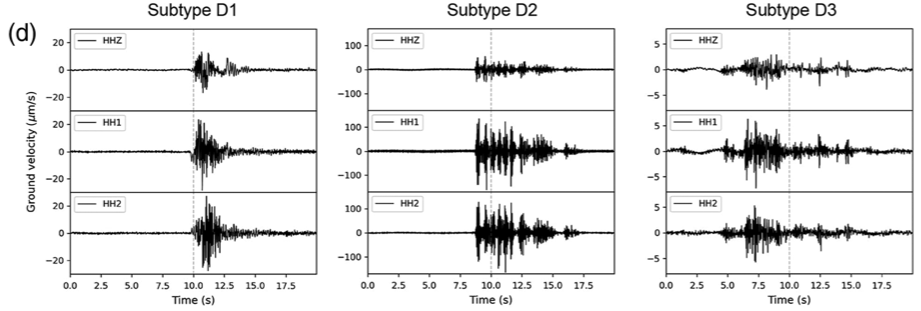
Characterizing seismic events in an industrial corridor of the Chicago area
October 4, 2025
Detecting small intraplate earthquakes in urban and industrial environments is no easy task. Seismic signals from human activities (e.g., construction, traffic, mining) can hide or resemble tectonic events, leading to frequent misclassifications, even when applying state-of-the-art detection methods, which rely on trained machine learning algorithms. To improve detection in built environments, more labeled datasets of anthropogenic events are needed to serve as training data. But building those datasets is itself a slow and difficult process.
A recent DEEPS study, first-authored by graduate student Ann Thomas and published in Seismological Research Letters, presents a simple machine learning workflow to facilitate seismic exploration and dataset building in noisy urban environments. The workflow combines a (1) power spectral density detector to detect anomalous events in continuous, noisy seismic data and a (2) k-means clustering model to group anomalous events of similar sources (e.g., quarry blasts vs. machinery operations). The approach was developed and applied to data from a broadband seismometer in the Chicago area, which led to hundreds of detections in an area known for few and far between earthquakes. Using the clustered events, the team created a labeled dataset of more than one thousand seismic events, including surface quarry blasts, underground explosions, and industrial machinery operations. Such events have been commonly misclassified as earthquakes by current detection methods. In the future, the team hopes to continue searching for hidden treasures in noisy urban data. Testing advanced unsupervised learning approaches (e.g, HDBSCAN) and extending the approach to a network of seismic stations are some of the future directions they are considering.
The EarthScope Consortium's Alka Tripathy-Lang provides more details and geological context about this research in an illuminating article on the EarthScope web site.
